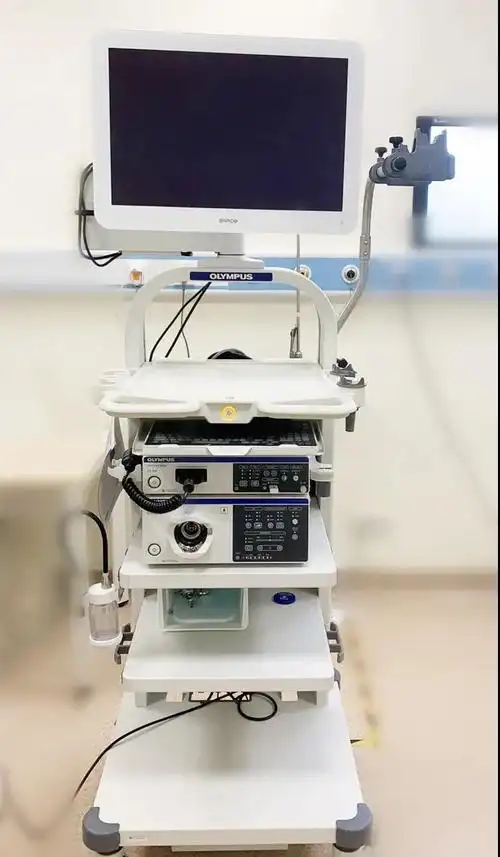
Olympus 290 Gastrointestinal Endoscope
Ultra high definition picture quality:
The Olympus 290 gastrointestinal endoscope adopts advanced electronic imaging technology and has ultra high definition image quality. Through high-definition cameras and digital signal processing capabilities, the subtle structure of the digestive tract mucosa, including capillaries and small lesions, can be clearly displayed.
Multi functional integration:
It integrates various advanced imaging technologies and treatment functions, such as narrowband imaging (NBI), dual focusing, and autofluorescence imaging (AFI), providing doctors with more comprehensive diagnostic methods and treatment options.
Easy to operate:
The diameter of the mirror body is thin, flexible, and easy to operate, making it convenient for doctors to observe and operate at different angles and depths. At the same time, it has functions such as intelligent bending, strong transmission, and variable hardness, further improving the convenience and accuracy of operation.
High patient comfort:
Compared with traditional gastroscopy, the examination process of Olympus 290 gastroscopy is more comfortable. Its painless gastroscopy examination technology allows patients to complete the examination within a few minutes of taking a nap, greatly reducing their pain and discomfort.
Safe and reliable:
Equipped with standardized and regulated cleaning and disinfection equipment, effectively avoiding the risk of cross infection. Meanwhile, its advanced imaging technology and intelligent design ensure the safety and reliability of the inspection process.
Function Description
Ultra high definition imaging:
By using high-definition cameras and digital signal processing functions, ultra high definition image quality can be achieved. It can clearly display the subtle structure of the digestive tract mucosa, including capillaries and small lesions, providing accurate diagnostic basis for doctors.
Narrowband Imaging (NBI):
By using special light technology, the morphology of submucosal capillaries and glandular duct openings can be clearly observed through two narrow wave lights, blue and green. Helps to detect digestive tract tumors and precancerous lesions early, improving diagnostic sensitivity and specificity.
Dual focus:
Equipped with dual focal length 45x optical magnification function, it can switch between normal mode and near focus mode with just one click. Doctors can choose the appropriate focal length as needed to conduct more detailed observation and analysis of the affected area.
Autofluorescence Imaging (AFI):
The use of high-sensitivity CCD (charge coupled device) fluorescence observation technology can accurately obtain information on mucosal lesions. By detecting the fluorescence response of mucosal tissue at specific wavelengths, it is helpful to identify lesions that are easily overlooked under routine observation.
Therapeutic function:
The Olympus 290 gastroscope not only has diagnostic functions, but also multiple therapeutic functions. Such as endoscopic biopsy, submucosal injection, submucosal dissection, etc., provide doctors with more comprehensive treatment methods.
Intelligent control:
Equipped with intelligent bending, strong conduction, and variable hardness functions, it is easy to insert and operate for control. At the same time, it has the ScopeGuide in vivo visualization function, which can help doctors see the formation of loops when forming them, optimize the operation process, and improve examination efficiency.
Wide field of view angle:
With a wide field of view angle of 170 degrees, it can illuminate the surrounding areas of the image and provide a wider field of view of 30 degrees. Helps doctors to more effectively detect mucosal lesions and reduce discomfort caused by angle adjustment to patients.
Secondary water supply function:
In examination and treatment, the auxiliary water delivery function can assist in hemostasis or cope with insufficient intestinal preparation. By injecting an appropriate amount of water into the intestine, the mucosa can be kept clean and moist, improving the accuracy and safety of the examination.
In summary, the Olympus 290 gastrointestinal endoscope plays an important role in clinical diagnosis and treatment due to its ultra-high definition image quality, multifunctional integration, easy operation, high patient comfort, safety and reliability, and other characteristics and advantages

